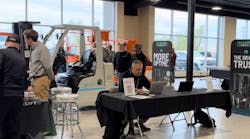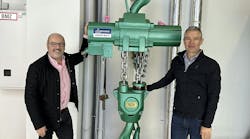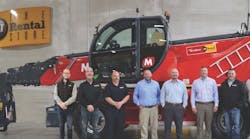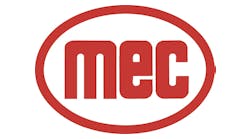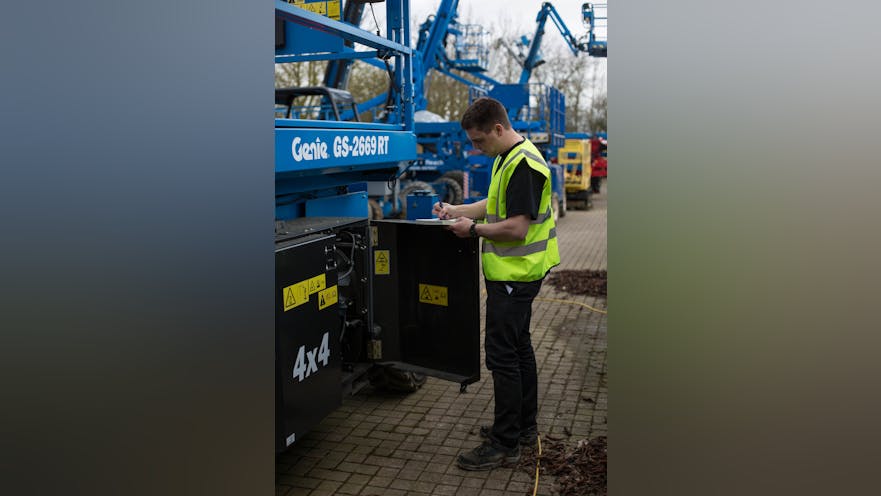By Scott Owyen
A pre-operation inspection is a visual inspection of a mobile elevating work platform (MEWP) performed by the operator prior to each work shift. The inspection is designed to discover if anything is apparently wrong with a machine before it is put into service. If the machine passes the pre-op inspection, then the next step is to conduct function tests.
The operator is responsible for performing the pre-operation inspection. If more than one operator is going to use the machine at different times in the same shift, they must each perform a pre-operation inspection, followed by function tests, before using the machine. In both cases, MEWP operators should refer to the manufacturer’s operation manual for items to be inspected and tested. Genie provides step-by-step instructions for performing inspections and function tests.
ANSI and CSA standards do not require that the pre-operation inspection be documented. However, the standards do require that operators are properly trained and that a trained and qualified supervisor is assigned to monitor the operator’s work performance. This includes ensuring that the operator is performing the pre-operation inspection and function tests. (Note, the standards do require that pre-delivery inspection, frequent inspection, and annual inspection be documented.)
If any obvious damage or unauthorized variation from factory-delivered condition is discovered, the machine should immediately be tagged and removed from service. Disconnecting the battery and applying lockout devices to the ends of the cables will ensure that the machine cannot be operated until it can be repaired. Repairs to the machine may only be made by a qualified service technician. After repairs are completed, the operator must perform a pre-operation inspection again before going on to the function tests.
An added benefit of pre-operation inspections is that the information can help to inform regular, preventative maintenance. Early identification and repair of unexpected problems is critical to reducing downtime and improving residual value of the equipment. This is where fleet monitoring through advanced technologies, such as telematics, can prove invaluable to rental operations.
Getting started
The first step is to make sure that the operator’s and safety manuals are complete, legible and in the storage container located in the platform. This is where information about the inspection points for daily inspections will be located. Next, be sure that all decals are legible and in place. See the “Inspections” section of the operator’s manual for guidance.
Hydraulics at the heart of the machine
Properly functioning hydraulics systems are critical to most MEWP operation. All Genie MEWPs use a hydraulic system, and some models share this system with their drive systems. Discovering and correcting changes in oil level, or improper hydraulic oil levels, can help prevent damage to hydraulic components.
A low level could be an indication of a leak. Of course, the most obvious sign of a hydraulic oil leak would be a puddle of oil under the machine or oil dripping from the chassis. However, there may be leaks that are not obvious from walking around the machine, which is why it is important to open and inspect the component trays to see if any oil has collected in the tray. Other signs may be a wet hydraulic line, or oil running down a hydraulic line or leaking from a fitting.
Hydraulic systems on most MEWPs run under extremely high pressure. As with any machine with moving components, especially machines used in rough terrain environments, there is a considerable amount of vibration that could potentially loosen hydraulic fittings over time.
If operators suspect there is a hydraulic oil leak, they should never use their hands to search for the leak. Escaping fluid under pressure can penetrate skin, causing serious injury. If an operator finds or suspects a leak, the machine should be tagged and removed from service until it can be inspected by a qualified service technician.
The best way to prevent hydraulic oil leaks is to make sure that the quarterly and annual inspections are properly and consistently performed by a qualified service technician. This ensures that the hydraulic system is thoroughly inspected and tested, and that all hoses and fittings are checked, tightened or replaced if necessary.
If no leaks are found, but the oil level is low, add oil to the proper level.
Also inspect the hydraulic filters. If the filter is not frequently checked and replaced, impurities will remain in the hydraulic system, which could result in component damage. Inspecting, and replacing hydraulic filters and fluids when necessary, can improve system performance as well as safe operation of the machine. See the “Maintenance” section of the operator’s manual for guidance.
Power systems
Likewise, check for battery/engine fluid/oil leaks and proper fluid level. See the “Maintenance” section of the operator’s manual for guidance. Check for engine coolant leaks and proper level of coolant. Add coolant if needed. See the “Maintenance” section of the operator’s manual for guidance.
The pre-operation inspection of a hybrid machine is identical to other MEWPs. The similarities between hybrid and diesel-powered lifts include basic engine and hydraulic system inspection, such as checking the hydraulic and engine oil, filters, hoses, and so on; and the similarities with electric-powered lifts include routine battery maintenance, electrical component inspections, etc.
Regular maintenance of batteries prolongs their life. Flooded lead-acid batteries must be checked regularly to make sure plates remain submerged in water. They typically need to be refilled every 1-3 months to keep them at optimum performance level. Sealed lead-acid batteries (gel and absorbent glass mat, or AGM) require little to no maintenance and are spill-proof. Lithium-ion batteries require no maintenance or venting. Like all components, batteries degrade over time. Lithium-ion batteries generally last for several times the number of cycles as lead acid batteries, leading to a longer effective lifespan.
All components are critical
Checking all components listed on the pre-operation checklist is critical. Incorrect function of any one component could lead to a serious issue. Loose or damaged pins or fasteners, for example, could result in compromised structural integrity. Damaged or broken wires could result in safety device failure or electrocution hazard. Poor tire condition could result in machine instability. A visual inspection can tell you whether your tread depth is sufficient, as well as whether if there is any sidewall damage. Also look for chunking, cracks, cuts, punctures and separation of tire material. Your machine’s wheel decals and operator’s service and parts manual can provide details specific to your model. Any tire with a defect that affects the integrity of the tire or the stability of the machine should be removed from service. Please refer to specific requirements for your machine, and a qualified tire repair technician, for tire repair.
In addition to the systems already discussed, below is a sample list of components that the manufacturer may require checking in a pre-op inspection.
· Electrical components, wiring and electrical cables
· Hydraulic hoses, fittings, cylinders and manifolds
· Fuel and hydraulic tanks
· Drive motors/turntable motors and drive hubs
· Wear pads
· Tires and wheels
· Engine and related components
· Battery pack and connections
· Limit switches, alarms and horn
· Alarms, beacons, and lights (if equipped)
· Pins, nuts, bolts and other fasteners
· Brake release components
· Safety arm (Genie GS™ Scissor Lifts)
· Scissor pins and retaining fasteners
· Platform control joystick
· Outrigger housing and footpads (if equipped)
· Ground strap (All Genie electric MEWPs)
· Platform entry mid-rail or gate
· Platform extension (Genie GS Scissor Lifts and GR™ Runabouts)
· Platform overload components
· Pothole guards (Genie GS Scissor Lifts and GR Runabouts)
· Lanyard anchorage points
· Check entire machine for:
o Cracks in welds or structural components
o Dents or damage to machine
o Excessive rust, corrosion or oxidation
Wrapping up and next steps
After the inspection is completed, the operator should be sure that all guards, screens and compartment covers are in place and latched. The pre-operation inspection is only half of the activity. After completing the pre-operation inspection, the next step is to perform the function tests on the machine as outlined in the operator’s manual.
Operators should always read the MEWP’s operator’s manual, provided by the equipment manufacturer, to learn more on how to perform these tests. It is important that operators always use the appropriate operator’s manual for the MEWP they are inspecting.
Scott Owyen is director of training, Genie


